If you’re looking for the best wildlife lenses for your Canon camera, you’re likely someone who wants to capture the beauty of the natural world. Whether you’re a professional photographer or an enthusiast, it’s essential to choose the right equipment to ensure the best possible shots. Wildlife photography requires lenses that are fast, sharp, and offer good reach.
Before making a purchase, there are several factors to consider, such as focal length, maximum aperture, and image stabilization. The focal length is critical because it determines the reach of your lens. Wildlife photographers often require lenses with a focal length of at least 300mm, which can capture subjects from a distance without disturbing them. The maximum aperture of a lens is also important as it determines how much light enters the lens, allowing you to shoot in low light conditions. Image stabilization can make a significant difference, particularly when shooting handheld.
If you're wondering which lens is the best for you, ask yourself the following questions: Are you looking for a zoom or prime lens? Do you need a lens that is compatible with a teleconverter? Will you be shooting in low light conditions? Each lens has its own strengths, so consider what you’re looking to achieve with your wildlife photography. There are many options available, and it's essential to choose the best one based on your needs and budget.
10 Best Wildlife Lenses For Canon
| # | Product Image | Product Name | Product Notes | Check Price |
|---|---|---|---|---|
|
1
|
The lens is ideal for capturing distant subjects and wildlife with its long reach and advanced image stabilization.
|
|
||
|
2
|
This product is ideal for capturing distant subjects with its long zoom range and image stabilization technology.
|
|
||
|
3
|
This product is ideal for photography enthusiasts who use Canon DSLR cameras and need a long zoom lens.
|
|
||
|
4
|
This product is ideal for photography that requires zoom capability and image stabilization, such as wildlife or sports photography.
|
|
||
|
5
|
Ideal for capturing distant subjects with sharpness and clarity on Canon SLR cameras.
|
|
||
|
6
|
The product is ideal for capturing distant subjects with its 70-300mm focal length and fast autofocus.
|
|
||
|
7
|
Ideal for capturing distant subjects with high detail, such as wildlife, sports events, and landscapes, on Canon DSLR cameras.
|
|
||
|
8
|
This product is ideal for professional photographers in need of high-quality zoom capabilities and image stabilization.
|
|
||
|
9
|
Ideal for macro photography and capturing intricate details of small subjects.
|
|
||
|
10
|
This lens is ideal for portrait, landscape, and low light photography with its fast maximum aperture and versatile focal length.
|
|
1. Canon Ef 100-400mm F/4.5-5.6l Is Ii Usm Lens, Lens Only
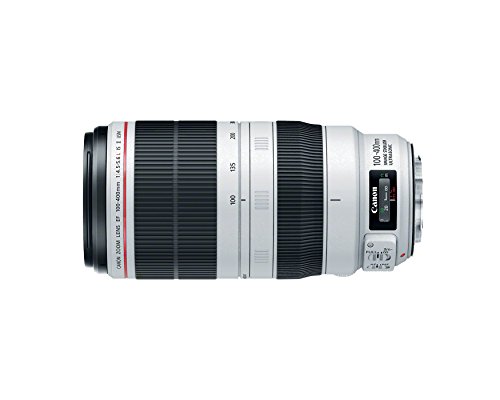
The L-series super-telephoto zoom lens is a top-of-the-line product designed for sports and wildlife photography. Its compact size and high performance make it easy to use and perfect for capturing fast-paced action.
The lens features a rotation-type zoom ring that allows for precise composition and excellent balance when handholding. This feature is particularly useful for photographers who need to quickly adjust their shots to capture the perfect moment.
Additionally, the improved zoom torque adjustment ring enables easy setting of zoom tension, making it easier for users to adjust the lens to their desired focal length. The lens has a focal length of 100-400mm, with a maximum aperture of 1:4.5-5.6. The closest focusing distance is 3.2 ft. / 0.98m, which allows for detailed close-up shots of subjects.
The lens is equipped with a new Air Sphere Coating (ASC) that significantly reduces backlit flaring and ghosting. This coating ensures that images are clear and free of any unwanted glare or distortion. The lens is also highly resistant to dust and water, making it suitable for use in harsh conditions. Its amazing durability ensures that users can continue shooting even in the most challenging environments.
2. Sigma 150-600mm 5-6.3 Contemporary Dg Os Hsm Lens For Canon
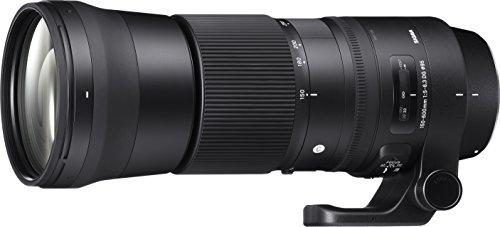
The lens being reviewed is designed to provide a lightweight and compact option for photographers who need to achieve greater usability. Its construction is optimized to minimize weight while still maintaining durability for long-term use. Additionally, the front glass element is coated with a water and oil repellent layer that makes maintenance of the lens surface a breeze.
One of the key features of this lens is its filter size of 95mm, which is ideal for photographers who need to use filters to achieve specific effects in their photos. The lens also boasts an impressive minimum focusing distance of 280cm or 110.2 inches, which allows photographers to get up close and personal with their subjects.
The focal length of this lens is 150-600mm, which provides excellent versatility for a range of photography applications. Whether shooting landscapes, wildlife, or sports, this lens is sure to provide sharp and clear images with incredible detail.
3. Sigma Camera Lens With Usb Dock Bundle
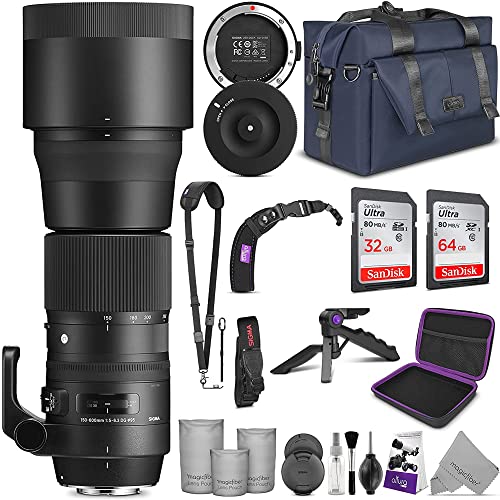
The Sigma 150-600mm Canon lens bundle comes fully equipped with all the necessary accessories for capturing stunning photos. The package includes the Sigma USB Dock, SanDisk 64GB and 32GB C10 Ultra UHS-I SDXC Memory Cards, Altura Photo Venture Camera Bag, Altura Photo Rapid Fire Neck Strap, Altura Photo Mini Tripod with Pistol Grip, Altura Photo Rapid Fire Wrist Strap, Altura Photo Hard-Shell Case, Altura Photo Cleaning Kit, and 3 sizes of MagicFiber Microfiber Lens Pouches.
The Sigma 150-600mm f/5-6.4 DG OS HSM Contemporary Lens is the first hyper-telephoto zoom from the contemporary line. It is built with lightweight and compact construction, making it easy to carry around. The lens offers a HSM (Hyper-Sonic Motor) that ensures a quiet and high-speed autofocus, and an Optical Stabilizer with Accelerometer that reduces camera shake while shooting. It also features a minimum aperture of f/22 and a filter size of 95mm.
This lens is compatible with all Canon DSLR cameras, including the EOS 7D Mark II, 70D, 77D, 80D, 90D, Rebel T3, T3i, T4i, T5, T5i, T6, T6i, T6s, T7, T7i, SL1, SL2, SL3 APS-C Cameras, and EOS 5D Mark III, 5D Mark IV, 6D Mark II, 5DS, 5DS R, 1Dx Mark II Full Frame DSLR Cameras.
The package includes Sigma accessories such as the LCF-95 III 95mm Lens Cap, Rear Cap LCR II, LH1050-01 Lens Hood, TS-71 Tripod Collar, Protective Cover PT-11, Lens Case, and Shoulder Strap. These accessories provide extra protection and convenience when carrying and using the lens.
4. Sigma 150-600mm F/5-6.3 Dg Hsm Os Contemporary Lens For Canon Ef
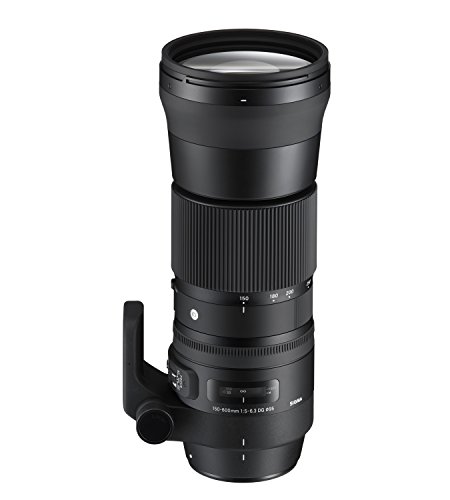
The lens is designed to be lightweight and compact, allowing for ease of use in a variety of settings. The front glass element boasts a water and oil repellent coating, making maintenance of the lens surface simple and quick. With a filter size of 95mm, the lens is equipped to handle a wide range of shooting situations.
In addition to its convenient form factor, the lens boasts impressive technical specifications. It has a minimum focusing distance of 280 cm (110.2 inches) and a focal length of 150-600mm, providing ample flexibility for capturing a variety of subjects. These parameters make it an ideal choice for photographers seeking a lens that can handle a wide range of shooting scenarios.
Whether you're capturing landscapes, wildlife, or portraits, this lens is sure to impress. Its water and oil repellent coating ensures that it will remain in top condition for years to come, while its lightweight and compact design make it easy to take on the go. With its high-quality construction and impressive technical specifications, this lens is a must-have for any serious photographer.
5. Canon Ef 100-400mm F/4.5-5.6l Is Usm Telephoto Zoom Lens For Canon Slr Cameras
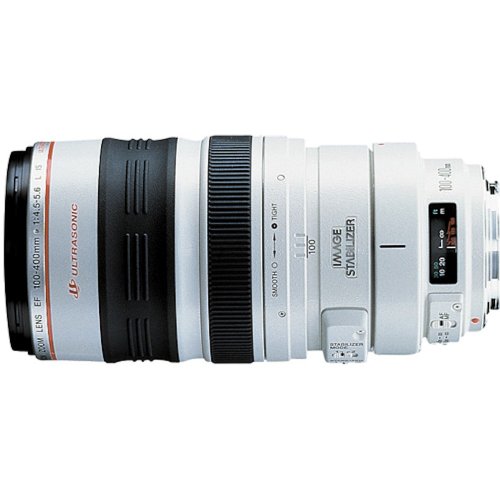
The Canon 100-400mm telephoto zoom lens is a superior lens designed for Canon SLR cameras. With a maximum aperture of f/4.5, this lens is perfect for capturing far-off action or close-up portraits. The lens features two Image Stabilizer modes which make it easy to capture stunning images without blur or distortion.
The Canon 100-400mm lens is also equipped with Flourite and Super UD-glass elements that largely eliminate secondary spectrum, resulting in sharp and clear images. The lens is also compatible with extenders 1.4x II and 2x II, making it a versatile option for photographers who require a longer focal length.
With a close focusing distance of 5.9 feet, the Canon 100-400mm lens allows photographers to capture stunning images even at close range. The lens measures 3.6 inches in diameter and 7.4 inches long, making it a compact and easy-to-carry option for photographers on the go.
The Canon 100-400mm telephoto zoom lens comes with a 1-year warranty, ensuring peace of mind for photographers. With its impressive features and specifications, this lens is a reliable and high-quality option for photographers who require a telephoto zoom lens for their Canon SLR cameras.
6. Canon Cameras Us Ef 70-300 Is Ii Usm 70-300mm F/4-5.6 Fixed Zoom Camera Lens, Black (0571c005)
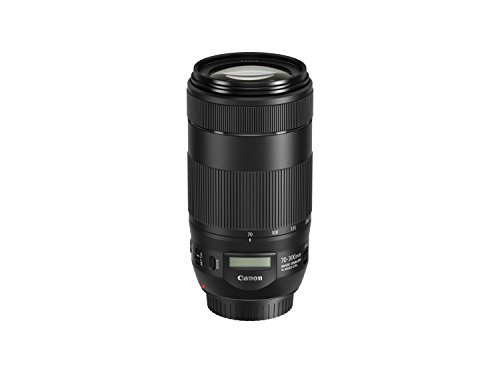
The Canon EF 70-300mm f/4-5.6 IS II USM Lens is a high-quality lens that offers exceptional performance and versatility. With its front-focusing method and helicoid ring drive, users can expect fast and accurate autofocus that is perfect for capturing sharp and clear images.
This lens is backed by a comprehensive protection plan from Asurion that includes free shipping on all repairs and no hidden fees or deductibles. The plan is fully transferable, giving you peace of mind that your investment is protected.
When you purchase the Canon EF 70-300mm f/4-5.6 IS II USM Lens, you can expect to receive an email from Asurion within 48 hours with your plan contract. Please note that this will not ship with your product.
7. Canon Ef 500mm F/4l Is Usm Super Telephoto Lens For Canon Slr Cameras
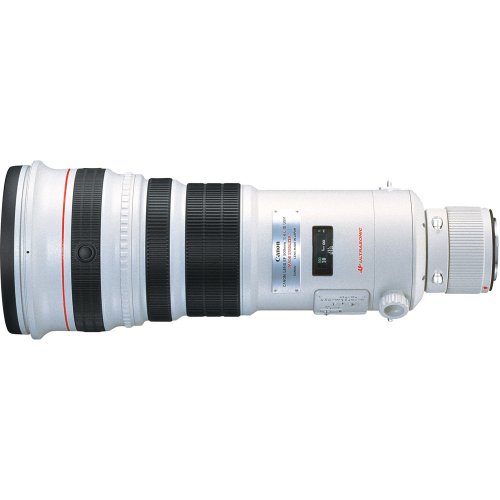
The super telephoto lens with an EF mount is perfect for capturing distant subjects with remarkable clarity and detail. This lens boasts a 500mm focal length, making it ideal for sports, wildlife, and astrophotography. The maximum aperture of f/4 ensures that your images are sharp and well-defined, even in low light conditions.
The lens features Fluorite and Ultra-low Dispersion-glass elements, which significantly reduce color fringing and chromatic aberrations, delivering incredibly sharp and clear images. Additionally, the lens is equipped with an image stabilizer that compensates for camera shake, allowing you to capture sharp images handheld.
The lens utilizes internal focusing, which means that the lens does not change length when focusing. This feature makes the lens more compact, lightweight, and easier to handle. Furthermore, the full-time manual focus allows you to make precise adjustments manually, even when the autofocus is engaged.
The Ring-type UltraSonic Motor (USM) ensures fast and silent autofocus, making it ideal for capturing fast-moving subjects. With this lens, you can quickly and accurately capture the moment without worrying about missing the shot.
8. Canon Ef 70-200mm F/2.8l Is Iii Usm Lens For Canon Digital Slr Cameras, White – 3044c002
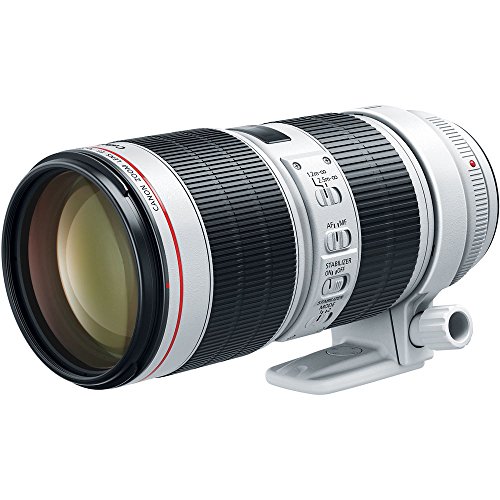
The EF70-200 millimeter f:2.8L IS III USM lens by Canon is a top-of-the-line, professional grade lens designed for use with Canon EOS cameras. One of its key features is its constant f 2.8 maximum aperture throughout the entire zoom range. This provides users with the ability to shoot clear and sharp images in low light conditions, as well as create beautiful bokeh effects.
The lens also boasts Canon's Air Sphere Coating (ASC) technology, which helps to minimize ghosting and flare, ensuring that images are clear and free of unwanted artifacts. Additionally, Optical Image Stabilization (IS) technology is built into the lens, providing up to 3.5 stops of shake correction. This feature is particularly useful when shooting in low light conditions or when using a slower shutter speed.
To help reduce smears and fingerprints, the front and rear elements of the lens are coated with a fluorine material. The lens is also highly resistant to dust and water, making it perfect for use in harsh conditions. The inner focusing system is powered by a ring ultrasonic motor, which ensures fast and accurate autofocus. Users can also switch to full-time manual focus at any time.
The EF70-200 millimeter f:2.8L IS III USM lens is constructed with one fluorite element and five UD (Ultra-low Dispersion) elements, which work together to produce high quality images with minimal chromatic aberration. The minimum focusing distance of the lens is 3.9 feet, or 1.2 meters, and it has a diagonal angle of view ranging from 34° to 12°.
Included with the lens are a lens cap (E-77II), lens dust cap (E), lens hood (ET-87), and lens case (LZ1326). With its outstanding optical performance, durable construction, and advanced features, the EF70-200 millimeter f:2.8L IS III USM lens by Canon is a must-have for professional photographers and serious enthusiasts alike.
9. Canon Ef 100mm F/2.8l Is Usm Macro Lens For Canon Digital Slr Cameras, Lens Only
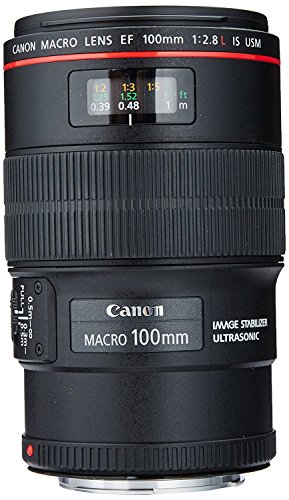
Introducing the Canon EF 100mm f/2.8L IS USM Macro Lens, a high-performance mid-telephoto macro lens that comes equipped with Canon's advanced Image Stabilization technology. Designed to capture stunningly detailed images, this lens boasts a 100 millimeter focal length and a 1:2.8 maximum aperture, making it the perfect tool for close-up photography.
The lens construction is made up of 15 elements in 12 groups, providing exceptional optical performance with minimal distortion. The 23.4-Degree diagonal angle of view ensures that you get the exact shot you want, while the inner focusing system with USM and full-time manual focus option allows for precision focusing at all times. The closest focusing distance is 0.99 feet or 0.3 meters, with a maximum close-up magnification of 1x.
This lens has a filter size of 67 millimeters and comes with a lens hood of ET-73. It is also compatible with 67 millimeter filters, although no close-up lenses are compatible with this lens. Please note that the EF1.4X II and EF2X II extenders cannot be used with this lens.
The Canon EF 100mm f/2.8L IS USM Macro Lens is Canon's first mid-telephoto macro "L" series lens to include Image Stabilization. The Image Stabilization technology compensates for camera shake and helps you capture sharp images even in low-light situations. The lens also features a near-silent Ultrasonic focusing system, which ensures that you can focus in complete silence, perfect for wildlife and nature photography.
This lens is perfect for capturing life-size close-up capabilities without an adapter, making it ideal for macro photography, portrait photography, and more. With its advanced technology and high-quality construction, the Canon EF 100mm f/2.8L IS USM Macro Lens is sure to impress even the most discerning photographer.
10. Sigma 24-70mm F/2.8 Dg Os Hsm Art Lens For Canon
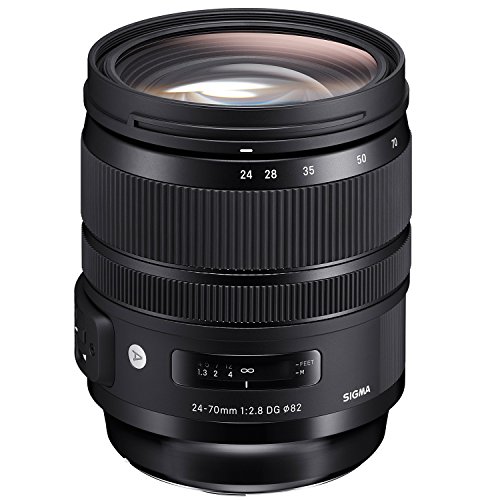
The SIGMA 24-70mm F2.8 lens is an exceptional addition to the arsenal of professional photographers, boasting top-of-the-line features that guarantee spectacular results. This lens is designed with OS functionality and a newly engineered HSM, enabling it to deliver exceptional performance in any shooting environment.
The lens barrel is specifically engineered for high rigidity, ensuring that the lens remains steadfast and stable while in use. This means that even under challenging circumstances, such as shooting in rough terrain or adverse weather conditions, the lens will maintain its integrity and produce high-quality results.
Whether capturing stunning landscapes, wildlife, or breaking news, the SIGMA 24-70mm F2.8 lens is the perfect choice for professionals seeking reliability and versatility. Its all-new design and features make it the ultimate lens for success in the photography industry.
With a range of parameters and specifications that cater to the needs of professionals, this lens is highly versatile and capable of delivering exceptional results. Its 24-70mm focal length range makes it ideal for a wide range of shooting styles, including portrait, landscape, and street photography. The F2.8 aperture ensures that the lens produces sharp and vibrant images with excellent bokeh.
Additionally, the lens features a newly designed HSM, which ensures smooth and accurate autofocus performance. This means that photographers can rely on the lens to capture even the most fleeting moments with precision and clarity.
Best Wildlife Lenses For Canon FAQs
Are prime or zoom lenses better for wildlife photography with Canon cameras?
Both prime and zoom lenses have their own advantages and disadvantages when it comes to wildlife photography with Canon cameras.
Prime lenses offer superior image quality and wider aperture, allowing for better low light performance and faster shutter speeds. They also tend to have a more compact and lightweight design, making them easier to carry around during long wildlife photography sessions. However, prime lenses do not offer the versatility of zoom lenses, meaning that the photographer may have to physically move closer or further away from the subject to get the desired composition.
On the other hand, zoom lenses offer more flexibility in terms of focal length, allowing the photographer to quickly adjust the composition without having to move around. They are also ideal for situations where the subject is moving unpredictably, such as birds in flight. However, zoom lenses tend to be heavier and bulkier than prime lenses, and may not offer the same level of image quality or low light performance.
Ultimately, the choice between prime and zoom lenses for wildlife photography with Canon cameras depends on the specific needs and preferences of the photographer. It is important to consider factors such as the desired composition, lighting conditions, and the physical demands of the photography session before making a decision.
Are there any budget-friendly options for Canon wildlife lenses?
Yes, there are budget-friendly options available for Canon wildlife lenses. Canon offers a range of lenses at different price points, so you can choose one that suits your budget.
One option is the Canon EF 75-300mm f/4-5.6 III lens, which is an affordable telephoto zoom lens. It is lightweight and compact, making it easy to carry around while hiking or traveling. The lens has a focal length of 75-300mm and a maximum aperture of f/4-5.6, which is suitable for capturing wildlife from a distance.
Another option is the Canon EF-S 55-250mm f/4-5.6 IS STM lens, which is a versatile telephoto zoom lens. It has a focal length of 55-250mm and a maximum aperture of f/4-5.6, which is suitable for wildlife photography. The lens also features image stabilization technology, which helps to reduce camera shake and improve the sharpness of your photos.
In addition to these lenses, there are also third-party options available from brands such as Tamron and Sigma, which offer affordable wildlife lenses for Canon cameras. So, there are plenty of budget-friendly options available for those who want to capture wildlife without breaking the bank.
Can I use teleconverters with Canon wildlife lenses?
Yes, you can use teleconverters with Canon wildlife lenses. Teleconverters are lens accessories that can be attached between the camera body and the lens to extend the focal length of the lens. They are a great tool for wildlife photography as they allow you to get closer to the subject without physically moving closer.
Canon offers a range of teleconverters that are compatible with their wildlife lenses. However, it is important to note that using a teleconverter can result in a loss of image quality, as the additional glass elements can introduce distortion, reduce sharpness, and affect autofocus speed. Additionally, teleconverters can also reduce the maximum aperture of the lens, which can impact low-light performance.
Before using a teleconverter with your Canon wildlife lens, it is important to check the compatibility of the lens and teleconverter, as well as the maximum aperture and autofocus performance. It is also recommended to use a sturdy tripod and remote shutter release to ensure sharp, stable shots.
Can I use third-party lenses with Canon cameras for wildlife photography?
Yes, you can use third-party lenses with Canon cameras for wildlife photography. Canon cameras use EF or EF-S mount, which means any lens with the same mount can be used on the camera body. Third-party lenses from brands such as Sigma, Tamron, and Tokina offer a wide range of options for wildlife photography.
When choosing a lens for wildlife photography, it is important to consider the focal length and aperture. A longer focal length will allow you to zoom in closer to your subject, while a wider aperture will let in more light and allow for faster shutter speeds.
Additionally, it is important to research and read reviews of specific lenses to ensure they meet your needs and are compatible with your camera body. It is also recommended to purchase from reputable sellers to ensure the lens is not a counterfeit product.
What are the best wildlife lenses for Canon cameras?
Canon offers a variety of lenses that are suitable for wildlife photography, each with its unique features to cater to different needs. The best wildlife lenses for Canon cameras are those that have a long focal length, fast autofocus, and image stabilization features to capture sharp and clear images of fast-moving subjects.
One of the top choices is the Canon EF 100-400mm f/4.5-5.6L IS II USM lens, which offers a versatile zoom range and excellent image quality. It also has a relatively lightweight design, making it easier to carry around for extended periods. Another popular option is the Canon EF 400mm f/5.6L USM lens, which is known for its sharpness, speed, and affordability.
For those who need even more reach, Canon also offers telephoto lenses like the EF 500mm f/4L IS II USM, which is excellent for capturing distant wildlife and birds in flight. However, these lenses can be quite heavy and expensive.
Ultimately, the best wildlife lens for Canon cameras will depend on your specific needs, budget, and shooting conditions. It is always recommended to do some research and try out different lenses before making a purchase.
What are the main differences between Canon's L-series and non-L-series wildlife lenses?
Canon's L-series is a line of high-end lenses that are designed for professional photographers. These lenses are known for their superior image quality, durability, and weather resistance. When it comes to wildlife photography, the L-series lenses are often the preferred choice due to their ability to capture sharp, clear images of fast-moving subjects.
One of the main differences between Canon's L-series and non-L-series wildlife lenses is the quality of the optics. L-series lenses are made with high-quality glass that is designed to minimize distortion and aberrations, resulting in sharper, clearer images. They also typically have wider apertures, which allows for faster shutter speeds and better low-light performance.
Another difference is the build quality. L-series lenses are constructed with weather-resistant materials and are designed to withstand harsh conditions. They also have features such as dust and moisture seals that help protect the lens from damage.
In conclusion, while non-L-series lenses can still produce great wildlife images, L-series lenses offer superior image quality, durability, and weather resistance that make them the preferred choice for professional wildlife photographers.
What are the top-rated Canon lenses for wildlife and nature photography?
Canon offers a wide range of lenses that are suitable for wildlife and nature photography. However, some of the top-rated Canon lenses for this genre of photography are the Canon EF 100-400mm f/4.5-5.6L IS II USM, Canon EF 400mm f/5.6L USM, Canon EF 600mm f/4L IS III USM, and Canon EF 200-400mm f/4L IS USM Extender 1.4x.
The Canon EF 100-400mm f/4.5-5.6L IS II USM is a versatile lens that covers a wide range of focal lengths, making it perfect for capturing both distant and close-up shots of wildlife. The lens features a fast autofocus system and image stabilization, allowing for sharp and clear images even in low light conditions.
The Canon EF 400mm f/5.6L USM is a lightweight and compact lens that provides excellent image quality, making it ideal for capturing birds in flight and other fast-moving wildlife. The lens offers a wide aperture, allowing for faster shutter speeds and better low light performance.
The Canon EF 600mm f/4L IS III USM is a high-performance lens that offers exceptional sharpness and clarity, making it perfect for capturing wildlife and nature images in detail. The lens features a fast autofocus system and image stabilization, making it easier to capture sharp images even when shooting handheld.
Lastly, the Canon EF 200-400mm f/4L IS USM Extender 1.4x is a versatile lens that offers both a wide range of focal lengths and a built-in extender, making it perfect for capturing wildlife at different distances. The lens features a fast autofocus system and image stabilization, making it easier to capture sharp images even when shooting handheld.
What features should I look for in a Canon lens for wildlife photography?
When it comes to wildlife photography, the right lens can make all the difference in capturing stunning images. If you're in the market for a Canon lens, there are certain features to look for that can enhance your wildlife photography experience.
Firstly, look for a lens with a long focal length. This will allow you to capture animals from a distance without disturbing them. A telephoto lens with a focal length of 300mm or more is ideal for wildlife photography.
Secondly, consider the maximum aperture of the lens. A wider aperture, such as f/2.8 or f/4, will allow more light into the lens, resulting in faster shutter speeds and sharper images.
Thirdly, look for a lens with image stabilization. This feature will help reduce camera shake and produce sharper images, especially when shooting handheld.
Finally, consider the build quality of the lens. Wildlife photography can be demanding and requires a lens that can withstand harsh environments. Look for a lens that is weather-sealed and made of sturdy materials to ensure durability.
In summary, a Canon lens with a long focal length, wide aperture, image stabilization, and sturdy build quality would be ideal for wildlife photography.
What is the ideal focal length for a Canon lens for capturing wildlife?
The ideal focal length for a Canon lens for capturing wildlife depends on a few factors such as the type of wildlife, the distance between the photographer and the subject, and the desired composition. Generally, a telephoto lens with a focal length of 300mm or more is recommended for wildlife photography as it allows the photographer to get close-up shots from a safe distance without disturbing the animals.
For smaller wildlife or birds, a focal length of 400mm or more is recommended to capture fine details and produce sharp images. On the other hand, a focal length of 200mm to 300mm may be sufficient for larger wildlife such as deer or bears.
It's important to note that the ideal focal length may vary depending on the photographer's personal preference and shooting style. Some photographers may prefer a longer focal length to capture more intimate shots, while others may prefer a wider focal length for environmental portraits. Ultimately, the choice of lens depends on the photographer's specific needs and preferences.
Which Canon lenses are recommended for wildlife photography?
When it comes to wildlife photography, having the right lens is crucial. Canon offers a range of lenses that are suitable for capturing stunning shots of wildlife, depending on your budget and preferences.
One of the most popular lenses for wildlife photography is the Canon EF 100-400mm f/4.5-5.6L IS II USM lens. This lens offers a versatile zoom range, allowing you to capture a variety of shots, and features advanced image stabilization technology to help reduce camera shake and produce sharp images.
Another great option is the Canon EF 400mm f/5.6L USM lens, which offers a longer focal length for more distant subjects and a wide aperture for low-light shooting. This lens is also lightweight and easy to handle, making it a good choice for fieldwork.
For those with a larger budget, the Canon EF 500mm f/4L IS II USM lens is a top-of-the-line choice. This lens offers exceptional image quality, fast autofocus, and advanced image stabilization, making it ideal for capturing stunning wildlife images.
Ultimately, the best lens for wildlife photography depends on your specific needs and budget. However, any of these Canon lenses would be a great choice for capturing stunning wildlife shots.
